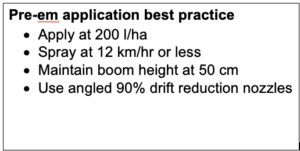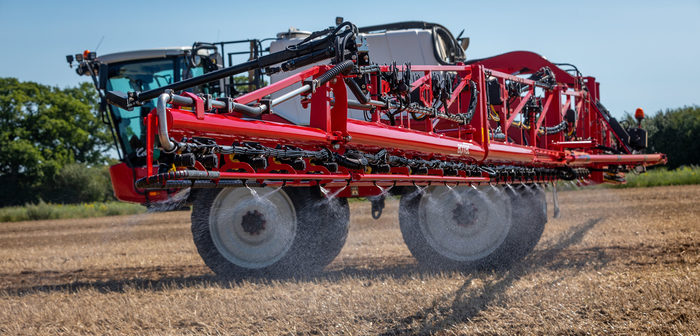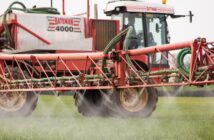The onset of windy autumnal weather conditions now poses an additional challenge for essential pre-emergence herbicide applications.
After a prolonged dry and settled late summer, some soil moisture will now bring a welcome chance for finer seedbed preparation, as well as a boost to residual herbicide performance. But wind causing disruption to spraying schedules is a serious concern, warns Syngenta application specialist, Harry Fordham.
“Syngenta grass weed trials consistently show best results are achieved with pre-emergence herbicide stacks applied as soon as possible after drilling,” he advised. “Performance will be maximised with a greater number of active ingredients in the stack, and with higher application rates that will give longer residual control.”
Pre-emergence application is the safest herbicide timing for the crop and enables higher rates of Defy to be used. Trials have shown applications utilising Defy at 4.0 or 5.0 l/ha consistently delivers greater efficacy on many grass and broad-leaved weeds.
A well-timed pre-emergence treatment also ensures control is in place, if subsequent post-em applications are delayed or missed because of weather conditions, as occurred last autumn, he added.
Harry pointed out that application opportunities were limited for many last autumn, initially because of persistent windy conditions, and then by wet weather and waterlogged soils.
“Over recent years we’ve seen more unsettled and windy conditions in the autumn. Growers and sprayer operators need to make the most of any opportunity and adopt techniques to maximise results,” he urged.

Using the Syngenta Spray Assist App gives advance notice of potential spray windows and weather conditions, along with nozzle recommendations and application techniques to achieve the best possible results at any timing. The App has been further enhanced for 2021, with results from the latest season of Syngenta application and grass weed control trials.
“Changing weather patterns increasingly result in more localised extremes,” said Harry. “Spray Assist uses local weather forecasts and predictive data to tailor results to any field location. User feedback has shown it is highly accurate and reliable.”
The recommendations for pre-emergence application reiterate the importance of speed, boom height and water volume. Advocating application at less than 12 km/hr, with a stable boom height of 50 cm above the soil and a water volume of 200 l/ha are all designed to minimise the risk of spray drift and achieve even spray distribution on the soil surface.
“Repeated seasons of application research has shown that can be further enhanced with the use of 90% drift reduction nozzle technology, combined with an angled spray pattern to give better coverage of soil clods.”
Harry added the work had also confirmed application at 200 l/ha consistently achieved optimum results, compared to 100 l/ha or lower water volumes. Whilst higher water volumes and slower spraying would have some impact on sprayer output, in practice effects were limited and could often be offset by gains in operation efficiency.
“If operators are under pressure to cover the ground, we would urge growers to prioritise treatment of problem fields with high grass weed populations at 200 l/ha, even if other fields were applied at a reduced water volume,” he advised.
Syngenta grass weed technical manager, Georgina Young, added that while pre-emergence Defy application can achieve the best results, where treatments are missed or delayed it can still be effectively used after crop emergence.
“Agronomists do need to be aware of the rates being used and the potential risk of crop damage if there is a high loading of partner herbicides in the mix,” she advised. “However, where necessary, Defy has been shown to be a very useful option to get residual control in place where pre-emergence application has proved impossible.”




